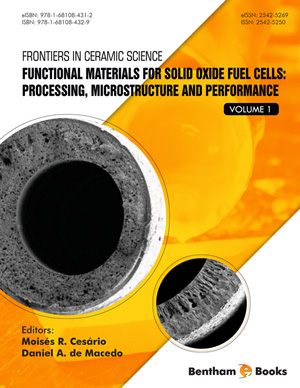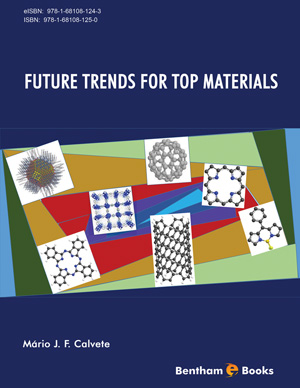Book Volume 2
Ion Implantation Profile in Patterned Substrate
Page: 3-17 (15)
Author: Kunihiro Suzuki
DOI: 10.2174/9781608057900113020003
PDF Price: $15
Abstract
We treat analytical models for two-dimensional profiles in patterned substrates. It is shown that the doses in the scaled MOSFET’s gates become significantly smaller that the doses in the large gate. We should therefore be careful about ion implantation conditions in scaled devices considering the two-dimensional effects. We further evaluated the relationship between vertical and lateral junction depth using the model.
Analytical Model for Two-Dimensional Profile in MOSFET’s
Page: 18-31 (14)
Author: Kunihiro Suzuki
DOI: 10.2174/9781608057900113020004
PDF Price: $15
Abstract
Two-dimensional profile model for ion implantation at high tilt angle was derived, in order to describe the pocket ion implantation of MOSFETs. Then we can generate two-dimensional profile of ion implantation for the full MOS process neglecting diffusion of dopants, in order to predict electrical characteristic of MOSFETs.
Three-Dimensional Ion Implantation Profile Based on Rp Line Concept
Page: 32-53 (22)
Author: Kunihiro Suzuki
DOI: 10.2174/9781608057900113020005
PDF Price: $15
Abstract
We first simplify the existing model for two-dimensional profiles without losing accuracy. Then, a geometrical appreciation is given to the model. Next, a Rp line concept is generated from the simplified model. We can generate three-dimensional ion implantation profiles related to the Rp line for various device structures, and demonstrate that this procedure is applied to three-dimensional ion implantation profiles in FinFET. Furthermore, the models are extended to make Pearson function available.
Ion Implantation Profile in Multi-Layer Structure
Page: 54-68 (15)
Author: Kunihiro Suzuki
DOI: 10.2174/9781608057900113020006
PDF Price: $15
Abstract
It is important to predict ion implanted profiles in substrates comprised of different materials, where related moment parameters are different. We describe two procedures to generate profiles in multi-layers by using data for each layer, that is, dose matching method, and Rp normalized method, where Rp is the projected range. We show the process in which the methods are applied to multi-layers. Dose matching method is a simple and effective method. However, it provides unstable results sometimes, while Rp normalized method provides stable results.
Dose Loss
Page: 69-77 (9)
Author: Kunihiro Suzuki
DOI: 10.2174/9781608057900113020007
PDF Price: $15
Abstract
Ion implanted impurity also plays a role for sputtering substrate atoms. The profiles are influenced by the sputtering. The database for the sputtering has also been developed. We described a model for the profiles where sputtering phenomenon is included. The model predicts the profile becomes invariable when the dose exceeds a certain value.
Amorphous Layer Thickness
Page: 78-120 (43)
Author: Kunihiro Suzuki
DOI: 10.2174/9781608057900113020008
PDF Price: $15
Abstract
A parameter of thorough dose, Φa/c is introduced to express continuous amorphous layer thickness. Φa/c is defined by the dose of ions that pass through the amorphous/crystal interface, and the thickness of amorphous layer da is expressed by Φa/c combined with parameters for ion implantation profiles. Φa/c is independent of ion implantation conditions but depends on impurities. Φa/c for Ge, Si, As, P, B, In, and Sb were evaluated. Consequently, we can predict da over wide ion implantation conditions.
Recrystallization of Amorphous Layer
Page: 121-128 (8)
Author: Kunihiro Suzuki
DOI: 10.2174/9781608057900113020009
PDF Price: $15
Abstract
We summarize effects of impurity concentration, kinds of impurity and crystal orientation on solid phase epitaxy (SPE) of silicon from amorphous layers created by ion implantation. SPE speed is significantly low for the wafer orientation of (111) and high for (100) orientation. The SPE speed is significantly enhanced by doping impurities, such as B, As, and P. N, O, and F retard the growth rate by one order, and the speed is almost zero for Ar and Xe. Random nuclear growth is a competing mechanism with SPE, and polycrystalline layer is formed where random nuclear growth rate is comparable with SPE.
Redistribution of Impurities During Solid Phase Epitaxy
Page: 129-142 (14)
Author: Kunihiro Suzuki
DOI: 10.2174/9781608057900113020010
PDF Price: $15
Abstract
It is found that impurities are redistributed during solid phase epitaxy, which cannot be explained by normal diffusion theory. A model is proposed, where the driving force of the redistribution is the phase transition from amorphous and crystalline forms. The model has parameters of a segregation coefficient m, which is between amorphous and crystalline Si, and an introduced parameter of reaction length l, that is, the distance where impurities are exchanged. The model reproduces various experimental data by using corresponding parameter values with the same theoretical framework.
Activation of Ion Implanted Impurities
Page: 143-162 (20)
Author: Kunihiro Suzuki
DOI: 10.2174/9781608057900113020011
PDF Price: $15
Abstract
Solid solubility is not a limiting factor for the maximum activation of impurities during solid phase epitaxial recrystallization (SPER). However, activation is limited to the maximum value of about 2x1020 cm-3 during SPER. A concept of the isolated impurity that has no neighbor impurities with a certain lattice range is introduced. The impurities react with neighbor impurities to form clusters, and only the isolated impurities can be active. The isolated impurity concentration has the maximum concentration at the total impurity concentration of about 1021 cm-3, and it decreases with a further increase in total impurity concentration.
Introduction
Ion Implantation and Activation presents the derivation process of related models in a comprehensive step by step manner starting from the fundamental processes and moving up into the more advanced theories. Ion implantation can be expressed theoretically as a binary collision, and, experimentally using various mathematical functions. Readers can understand how to establish an ion implantation database by combining theory and experimental data. The models described in this ebook can be directly related to practical experimental data with various approaches: physical, empirical or experimental. Readers can also understand the approximations, and assumptions to reach these models. The redistribution and activation of implanted impurities during subsequent thermal processes are also important subjects and they are described in a broad manner with the combination of theory and experiment, even though many of the models are not well established. Chapters in the book explain, in depth, various topics such as Pearson functions, LSS theory, Monte Carlo simulations, Edgeworth Polynomials and much more. This book provides advanced engineering and physics students and researchers with complete and coherent coverage of modern semiconductor process modeling. Readers can also benefit from this volume by acquiring the necessary information to improve contemporary process models by themselves.











